Arctic by RIB - Episode 10 - Aappilattop to Paamiut
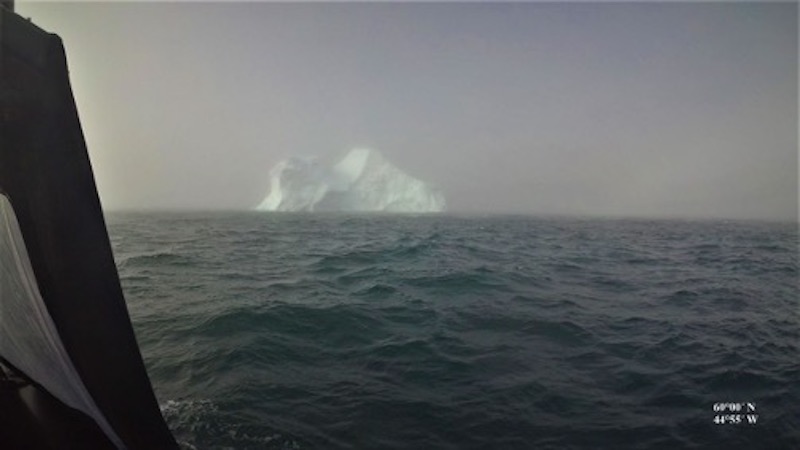
After a harrowing man-overboard experience on the south coast of Greenland, the adventurers completed a visit at the Inuit village of Aappilattoq and turned their bow toward Nuuk, the capitol city, where a Suzuki team awaited them to service the engines. But they were not to arrive without further challenges.
Fog and Ice Everywhere
It took us 3 hours to cover the 40 miles that separated us from Nanortalik. Running at speed was out of the question due to the low visibility and frequent ice chunks that could have damaged the boat or the lower units. Patience, a sharp lookout and our GPS eventually brought us to the village.
Nanortalik is Greenland's 11th largest settlement with 1,185 inhabitants and the first village we encountered when coming from the South. The village name means "area of polar bears", and that plus the location next to the famous Tasermiut Fjord has made the area a tourist attraction in recent years.
However, the dense fog and incredible humidity that prevailed everywhere on the day of our arrival did not leave much room for acquaintance and sightseeing. We refueled from the gas station located next to a special platform, found a place in the crowded harbor and headed to the hotel-restaurant to rest and get strength for the next day.
The next morning without ceremony we set sail for Paamiut, 200 nautical miles further north.
DAY 24th / Tuesday 26 of July 2022
Time 22:00΄
Position: 61°31΄N 49°01΄W – Smallsud
With strong waves against our bow, a lot of fog and countless icebergs in our way, we navigated at low speed for many hours. It was very difficult to gain the miles while the cold was bitter and the tension within us very high from our constant focus on the radar screen and the incessant scanning the horizon trying to avoid ice. After 90 nautical miles of rough navigation, we stopped at a leeward bay on Nunarsuit Island for food and a short rest.

We continued to travel at low speed. When we had covered 165 nautical miles, with about 35 more to reach Paamiut which was our final destination, suddenly the starboard engine shut down. Loss of an engine in these waters is no small matter, since we now had only one motor to keep us off the rocks and push us onward toward some vestige of civilization.
However, my experience told me that in 90% of the cases like this there is an obstruction in the fuel supply. The “smart” computerized Suzuki had not issued any fault code, so we were optimistic. Of course we also had Carlos aboard, with long experience in keeping motors happy.
In the open water and fog we didn't have the luxury of looking to find the cause of the problem as the stern locker had too many things to remove for Carlos to get at the fuel system. We tried several times to start the engine but it stubbornly refused to start. But everything indicated that it was fuel starvation—hopefully an easy fix.
Anchoring for the Night
It was late in the afternoon, so we unanimously decided to look for the nearest bay, where we would be safe and of course spend the night. A few miles ahead of us, the map showed a narrow and long bay, at the bottom of which was a small island. Directly behind this islet was a small cove that pointed to a safe haven. Without wasting a moment, we turned our bow towards the entrance of the bay. We were now moving on the left engine alone at 4-5 knots, through ice and reefs, while the thick fog challenged us every mile.
When fog is accompanied by the presence of icebergs and countless small pieces of ice it becomes particularly threatening. We were also very close to the shores where rocks protruded through the surface frequently—any one of them could wipe out our remaining engine in an instant, or maybe even damage the fiberglass bottom of the Seafarer.
The waters were uncharted, with the result that the GPS did not show us the depths. We eased along through the fog at less than walking speed. At one point it took us more than an hour to cover a distance of less than a nautical mile.
But at last we found the narrow entrance of Smallsud Cove. We slowly went behind the islet and dropped anchor. The air temperature was +3 °C, but we were temporarily in a point of refuge. We immediately got to work and quickly emptied the rear locker completely, perhaps issuing a few silent prayers as we went.

We got out the spare parts and water separator filters. Carlos got his gear and dove into the locker where the fuel lines were hidden. He worked his magic. After some time we were ready to test the engine.
Engine Problem Solved
Blessedly, it started immediately! We let it run for about 20 minutes—no further symptoms. Certain now that the issue had been repaired, we took out food and entered the cabin for our dinner. The heater took only a few minutes to heat up the small cabin space so we felt very comfortable removing our heavy suits. Snug and full, we set the alarms for 6 a.m. and fell into a deep sleep.
DAY 25th / Wednesday 27 of July 2022
Position: 61° 59΄ N 49° 40΄ W – Paamiut
At 06:30 in the morning, we raised the anchor and slowly left our peaceful haven. The fog did not disperse, and the cold was more noticeable. The air temperature was a scant -3 °C.
Outside the entrance to our narrow cove, we picked up speed.
More Fuel Flow Problems
But less than 5 minutes passed and suddenly the starboard engine stopped working again. Without a second thought, we turned our bow again towards the shelter where we had spent the night. The frost was numbing our fingers, but we had to re-empty the stern locker and re-inspect the fuel lines.
With no time to waste, thinking that the problem might be in the boat's main tank, we took a long spare fuel hose and fed petrol directly to the starboard engine from the polyester tank, bypassing the entire central fuel system. Now, the engine had no reason not to run.
And it didn’t fail us—it started immediately and continued running the rest of the trip.
It was already 09:30. We were trying to reach Paamiut, but the icebergs and dense fog did not allow us to cover many miles. Sometimes we imagined we saw icebergs that were not there—but just as often they were. We spent many hours of navigation in thick fog, where we could not see beyond 20 meters. In some regions small chunks of ice covered huge areas, and they were only 2-5 meters apart. Again, we had to slow to 3-7 knots to protect the hull and the running gear.
The fog was still incredibly thick in some places. It was obvious that it was created by the warmer and moister air over the frozen waters. The cold, which during the morning is particularly intense, causes moisture to condense, forming tiny droplets that are suspended in the air. This is perhaps the main reason why fog is a very common phenomenon in these latitudes.
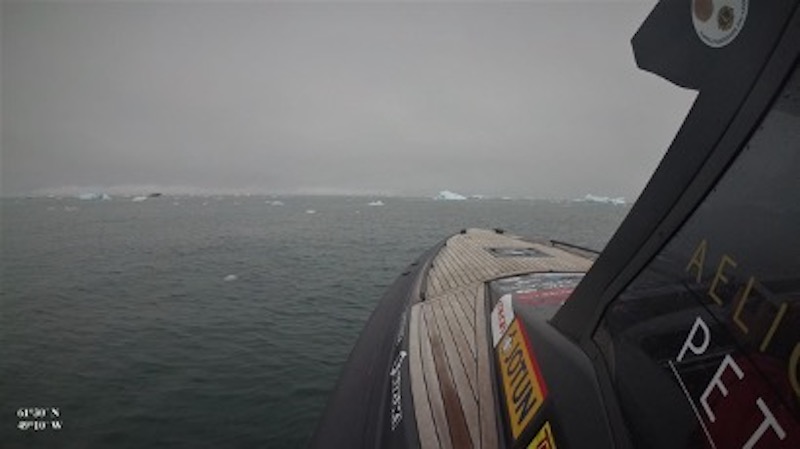
And the thicker the fog, the more we slowed down. Sometimes I even stopped the RIB completely when I was unsure of which course to take or when a huge mass of iceberg suddenly appeared, like a ghost, only a few meters from our bow. Oddly, I now felt a certain familiarity with the ice.
All the RIB’s lights were permanently on, as was the AIS, while our eyes were constantly fixed on the radar, which under these conditions is the ultimate tool. It was our only true vision in the fog and ice. Its help was very important and filled us with confidence and optimism.
For about 10 miles we slowly traveled through thick fog and a sea filled with icebergs and small pieces of ice, products of the very large glacier in the particular latitude we were traveling.
It was still a few miles to Paamiut, where we hoped to see an end to the worst of the fog. Conditions are worst for fog on the southernmost coasts of Greenland, and we were continuously making our way north now.
Safe Arrival at Paamiut
Just after noon—still in absolute fog--we were navigating among the numerous islets located outside the port of Paamiut. We found our way into the harbor with relief. We first headed to the gas station located on the dock to refuel and then returned to one of the floating platforms in the narrow harbor. There was a decent hotel-restaurant close by where we stayed for two nights, restoring our strength.
DAY 26th / Thursday 28 of July 2022
Position: 61°59΄N 49°40΄W – Paamiut
On this day, the “Windy” app forecasted heavy fog and winds of 25 knots. So we decided to stay safe on our floating platform and only concern ourselves with tidying up and cleaning the boat.
We emptied almost all the lockers and spread our things out on the platform where we were moored. We had time now to completely replace all parts of the fuel system. We cleaned the boat and put our endless supplies back inside, tidy and neat. Local children watched us with intense curiosity painted in their eyes.
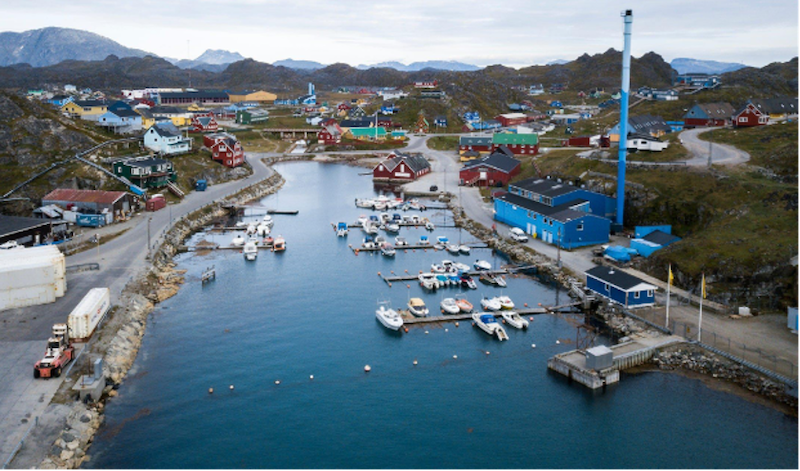
About Paamiut
A trading post was established here by Jacob Severin's company in 1742[5] and named in honor of the Crown Prince Frederick (later King Frederick V of Denmark). The community prospered on trading fur and whale products. It also became known for its soapstone artists. The town has one of the finest churches in Greenland, built in 1909 from wood in the Norwegian style.
Following the warming climatic trends since the 1920s, Paamiut developed a booming cod industry between the 1950s and 1989, when the stock dwindled. In connection with a development plan called G60, Paamiut was chosen to be the place to live for the entire population of the former Paamiut municipality. Therefore, the number of people living there rose significantly during that period, but now is in decline with about 1,300 people living here.
Economy. As is the case for other towns of western Greenland, the sea is free of ice during the winter, while fishing is the primary occupation of the inhabitants of the region. Icebergs, coming adrift along the east coast of Greenland with the East Greenland Current and continuing up along the west coast with the West Greenland
Current normally arrive in the autumn, bringing numerous seals marking this season as a great time for the local hunters.
There is local museum downtown in original buildings from the previous century, among them a carpenter workshop and a salt warehouse.
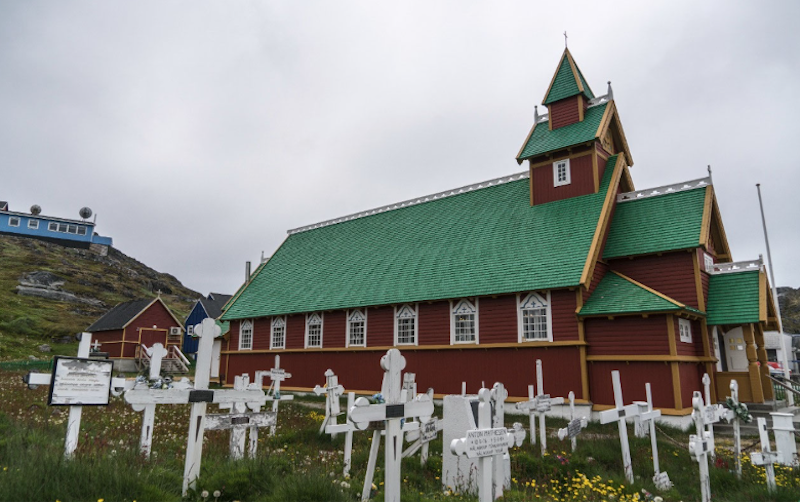

DAY 27th/28th - Friday/Saturday 29-30 of July 2022
Position: 64°11΄N 51°41΄W – Nuuk
On Friday at 07:30 in the morning, we untied the lines and turned our bow to the North. Some 150 nm separated us from Nuuk, the capital of Greenland. There, our friends, the entire Suzuki-Greenland staff, were waiting for us. We had planned to take the boat out of the water for a full service and thorough inspection at that point.
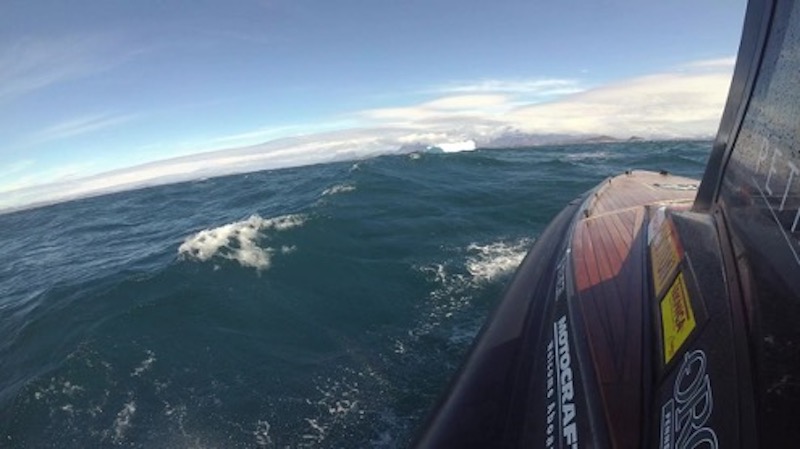
It was our first time riding in Greenlandic waters without fog, without floating pieces of ice, without multitudes of icebergs. We saw only five to ten large icebergs and those far from our course. The first 80 miles passed nicely, with clear skies and perfect glassy seas.
The remaining 70 miles were more difficult, with wind speeds around 20 knots, peaking at 25 a few miles before our destination. The boat handled them well. They were south-westerns and we were traveling with blue horizons. Just as predicted by Windy who had become our best friend.
I can say we enjoyed this part of the cruise. We were changing every hour at the steering wheel.
We enjoyed running with the waves, although sometimes they were particularly big, and we ran sometimes normally and sometimes at high speeds. We needed this to release a little of the tension built up inside us.
Tomorrow – Nuuk or Bust...